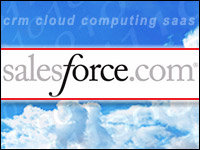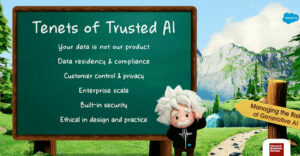
We’ve all heard the lines: “blogging is so 2008”; “say that in 140 characters or less,” and now, “the feed is the new desktop.” This last one is from Salesforce.com CEO Marc Benioff, and he said it in the context of his company’s release of the new version of its enterprise social networking tool, Chatter 2.
In the few months since its release, according to Salesforce, Chatter has been adopted by more than 20,000 companies. Perhaps the highest-profile one is Dell.
By “feed,” of course, Benioff is referring to the string of status updates and posted links familiar to Facebook users, but also found on a variety of other social networking tools. Chatter, in fact, has been dubbed “Enterprise Facebook,” due to its resemblance to the popular online service. The difference is that Chatter is designed for use within enterprises, for employees to collaborate as they build project teams, work sales efforts and share information.
Market Misconceptions
It’s a distinction that’s important to make — internal collaboration versus collaboration with customers — noted William Band, a vice president with Forrester Research.
The difference between consumer social networking and enterprise social networking is one that has been lost in the shuffle, Band told CRM Buyer.
The enterprise software market would do well to bring some clarity back to the definitions, he maintained, as both types of social interaction are important, but one won’t stand in for the other.
“Teams have to share information,” explained Band.
Social tools can be useful for such tasks, but “everybody’s putting the term ‘social’ on everything,” he said, “just like they put ‘cloud’ on everything.”
It’s difficult for the companies that buy software to distinguish among products this way, Band said, “and vendors can lead them astray.”
“Chatter doesn’t solve every problem under the sun, even though Marc Benioff is telling them, I’m sure, that it does,” observed Band.
The marketplace needs to get much more clear about the difference between interaction and collaboration with customers and interaction among employees, he said, as both are crucial to effective CRM efforts.
Quieting the Chatter
Interestingly, some of the added features in Chatter 2 seem designed to address the information overload all social networking tool users experience, along with the anxiety felt by many executives as they watch their employees use a Facebook lookalike to do their jobs.
Chatter Filters, for example, allows users to filter their Chatter Feed by the groups, people, and records they follow. It’s much like the profile preferences that users can tweak in Facebook, allowing some friends’ updates to come through on a feed while suppressing others.
A Chatter File tool acts as a sort of document repository, notifying users when particular files posted by other employees are updated.
Of course, knowledge management software companies offer myriad specialized knowledge bases.
In addition, more consumer-oriented companies, like Google with Google Docs and Microsoft’s Fuse Labs with Facebook Documents, offer document-sharing through familiar social networking interfaces.
These popular document repositories tend to make enterprise IT organizations nervous, though.
The security features simply are not in place to allow sharing of work-related documents through a standard social interface, Claire Simmers, chair and professor of management and international business at St. Joseph’s University, told CRM Buyer. Companies may feel more comfortable knowing that standard enterprise software precautions are intact, though employees will be sharing documents through a social networking software tool.
Chatter 2 also has added tools for backtracking through a maze of updates for information on a particular issue or project. By taking a page out of Twitter’s playbook — hashtagging — Salesforce.com now lets users associate their own updates with related posts and comments through a topic tag. Users also can search on the hashtag topics to find a collection of updates on the same subject.
The new version also includes a desktop client, allowing employees to post updates, comments, files and links without opening a Web browser. The client was built with the Adobe Flash Builder for the Force.com platform, and it displays pop-up notices of incoming items.
An analytics module allows administrators to create reports and dashboards for Chatter users within a company. This allows companies to segment usage and determine best practices, said Salesforce.com.
Chatter is generally available currently and is included at no additional charge with user subscriptions of Salesforce CRM and Force.com. The new version will be available in October.





















































